Click here to return to main conference page.
| ABÉ Yasurō 阿部泰郎 (University of Nagoya 日本名古屋大學) 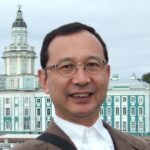 |
My research focuses on the religious texts of medieval Japan, emphasizing their context as objects of religious cultural heritage. I have strived to demonstrate how religious texts, images, and other objects have been used, transmitted, and understood from the Middle Ages through the present day. Through the analysis of concrete examples—such as the cult of Prince Shōtoku, and various conceptions of the “sacred” in medieval Japan—I have demonstrated that these texts mutually interact not only with each other, but also with external works of literature, performative arts, and iconography. I have published numerous articles, co-edited three series of publications of manuscripts from Shinpukuji (with Yamazaki Makoto 山崎誠: Shinpukuji zenpon sōkan 真福寺善本叢刊 and Shinpukuji zenpon sōkan dai ni ki 真福寺善本叢刊第二期, Kyoto: Rinsen shoten, 1999-2005; 24 vols.), and several books, including Chūsei Nihon No Shūkyō Tekusuto Taikei 中世日本宗教テクスト体系 [The System of Medieval Japanese Religious Texts] (Nagoya: Nagoya university press shuppankai, 2013) and Chūsei Nihon No Sekaizō 中世日本の世界像 [The World of Images in Medieval Japan] (Nagoya: Nagoya university press, 2018). |
| DENG Qiyao 鄧啓耀 (Sun Yat-sen University 中山大學)  |
鄧啟耀,中山大學榮休教授。現為廣州美術學院教授、視覺文化研究中心主任、國家社科基金重大項目“中國宗教藝術遺產調查與數字化保存整理研究”首席專家。研究專長為視覺人類學。部分紀錄片作品被邀參加國際交流,策展多個視覺文化藝術展;出版《宗教美術意象》、《民族服飾:一種文化符號》、《中國神話的思維結構》、《中國巫蠱考察》、 《視覺人類學導論》、《我看與他觀:在鏡像自我與他性間探問》、《非文字書寫的文化史》、《佛性如風:佛教藝術研究》等學術專著。 圖片為作者在青海藏傳佛教寺院考察時留影(2006) |
| Lucia DOLCE (University of London 英國倫敦大學) |
Lucia Dolce is the Numata Reader in Japanese Buddhism at SOAS University of London, and director of the SOAS Centre of Buddhist Studies. Dolce holds a first degree from the University of Venice (Italy), and a Ph.D. from Leiden University (Netherlands). Her wide-ranging work explores doctrinal and ritual aspects of Buddhism in Japan, with a focus on the medieval period. She has published on the Lotus Sutra and the Tendai and Nichiren traditions of interpretation; Tantric Buddhism; rituals and ritual iconography; and kami-buddha combinatory cults. Her current project examines the discourse on the body in the ritual landscape of medieval Tantric Buddhism. |
| Amanda GOODMAN (University of Toronto 加拿大多倫多大學)  |
Amanda Goodman (Ph.D., University of California, Berkeley, 2013) is an Assistant Professor cross-appointed in the Department for the Study of Religion and the Department of East Asian Studies. Her research focuses on the formative Tang-Song transition period of Chinese Buddhism, and specifically the Chinese esoteric or tantric Buddhist traditions of the eighth through tenth centuries. Grounded in the textual and material finds from the Dunhuang Buddhist cave site, her work engages with broader conceptual issues in the study of the dissemination and appropriation or alteration of Buddhism across the Sinitic world in the pre-modern period. She is also interested in the cross-cultural transmission of Buddhism along the old Silk Road, and regularly teaches on the topic of Central Asian Buddhism. She is currently preparing a book-length study centered on an indigenous Chinese Buddhist ritual compilation, the Vajra Peak Scripture, that reflects on regional and trans-regional esoteric Buddhist ritual trends during China’s middle-period. |
| Tamami HAMADA 濱田瑞美 (Yokohama University of Art and Design 横浜美術大学) 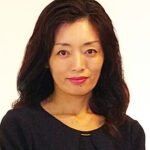 |
Tamami Hamada, Ph.D., is Associate Professor at Yokohama University of Art and Design in Japan. She obtained her Ph.D. in 2007 at Waseda University, Faculty of Letters, Arts and Sciences, History of Art. Her research focuses on Buddhist art history in East Asia, particularly in China from the 7th to 12th centuries. Her monograph, Chugoku Sekkutsu Bijutsu no Kenkyu 中国石窟美術の研究 (Study of Buddhist Cave Art in China), (Tokyo: Chuo Koron Bijutsu Shuppan 中央公論美術出版, 2012) examines the sources of Buddhist iconography in wall paintings and sculptures in Buddhist caves and cliff images in areas including Dunhuang, Kizil, Sichuan and Longmen, and explores the meaning of these works in religious cave spaces. It also attempts to provide an explanation for there being a vast number of Buddhist cave temples in China. Hamada has discussed topics such as: Preaching Buddha, Buddha of Traikālya, Buddha commissioned by the Indian King Udayana, Amitābha, Vimalakīrti scene, Bhaiṣajyaguru scene, Esoteric Buddhist art works, Thousand Armed Avalokiteśvara, etc. |
| Hiromitsu IKUMA 伊久間洋光 (Taisho University 日本大正大學) 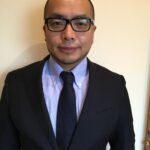 |
Dr. Hiromitsu Ikuma is a research fellow in the Institute for Comprehensive Studies of Buddhism, Taisho University. He received his Ph.D. from the Department of Indology and History of Indian Buddhism at Graduate school of Arts and Letters, Tohoku University in 2019. His Ph.D. Dissertation is about a study on the Tathāgataguhyasūtra 如来秘密経 (the Guhyakādhipatinirdeśa 密迹金剛力士経), quoted in the Prasannapadā, the Dà zhì dù lùn大智度論, the Benkenmitsunikyōron 弁顕密二教論 and so on. He plans to publish the Sanskrit edition of the Tathāgataguhyakasūtra later this year, with a subsidy from the Shingon-Buzan school to which he belongs. His recent research focuses on early Mahāyāna scriptures such as the Prajñāpāramitā and on these Sanskrit manuscripts. He is also preparing a study on the relationship between early Mahāyāna scriptures and the Āgama scriptures. |
| HOU Chong 侯沖 (Shanghai Normal University 上海師範大學) 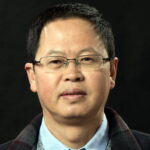 |
侯沖,哲學博士。上海師範大學教授。曾就職於雲南省社會科學院。出版著作《白族心史――<白古通記>研究》《雲南與巴蜀佛教研究論稿》《雲南阿吒力教經典研究》《漢傳佛教、宗教儀式與經典文獻之研究》《“白密”何在――雲南漢傳佛教經典文獻研究》《中國佛教儀式研究――以齋供儀式爲中心》等。近年來主持國家社科基金重大項目《漢文大藏經未收宋元明清佛教儀式文獻整理與研究》。 |
| IWASAKI Hideo 岩崎日出男 (Sonoda Women’s University 園田学園女子大学)  |
1959年生於日本北海道。高野山大学大学院文学研究科密教学専攻博士課程学分取得肄業。園田学園女子大学教授。専門領域為唐代密教。主要論文有、〈密教の伝播と浸透〉(密教的伝播與浸透)〈不空三蔵の密教宣布における修功徳の役割とその意義 -哥舒翰の不空三蔵招聘から長安における密教宣布の展開とその特質-〉(A role and meaning of Syukudoku 修功徳 for esoteric Buddhism propagation of Amoghavajra不空三蔵)2012〈長安西明寺円照の生没年について〉(On the Dates of Yuanzhao of Ximing Monastery in Chang’an Miscellaneous news)2018〈五臺山・金閣寺の構造とその教理的背景について〉(The Strucure and Backgronund of Mt.Wutai五臺山and the Kinkakuji Temple金閣寺)2013〈順暁から最澄への密教受法について-入唐時、唐土における密教伝播の状況からみたその内容と問題点-〉(On the Transmission of Esoteric Teachings from Shunxiao to Saicho(―) -Its contents and associated problems from a perspective of the diffusion of esoteric Buddhism in the Tang Dynasty. -)2015〈新出、前左領軍衛兵曹参軍翰林待詔趙遷述「大唐故寶應功臣開府儀同三司右龍武軍将軍知軍事上柱國涼國公李公墓志銘并序」について〉(Introduction of a Newly Discovered Work:Zhao qian’s Epitaph for li yuan cong)2019等著作豊富。 |
| Takahiko KAMEYAMA 亀山隆彦 (Ryukoku University 龍谷大學)  |
Takahiko Kameyama is a postdoctoral research fellow of the Research Center for Buddhist Cultures in Asia, Ryukoku University. His research field is both the doctrinal and ritual discourses which were developed mainly within Japanese Esoteric Buddhist traditions during medieval time period. Kameyama received his Ph.D in Buddhist Studies from Ryukoku University on 2013. The subject of his dissertation is the development of the doctrinal concept “Attaining Buddhahood within This Very Body” in medieval Shingon and Tendai Esoteric Buddhism. Kameyama currently focuses on the research on the multiple physiological and embryological discourses transmitted by Esoteric Buddhist practitioners who belonged to Shingon Buddhist temples such as the Tōji, Daigoji, and Mt. Kōya during the Kamakura and Muromachi time period. He examines these discourses from the historical and semiotic perspective, and attempts to reveal the significance of a human body unique to nedieval Shingon Buddhism. |
| George Keyworth 紀強 (University of Saskatchewan 加拿大薩斯喀徹溫大學)  |
George Keyworth is Associate Professor in the Department of History at the University of Saskatchewan, in Canada. He received his Ph.D. in Chinese Buddhist Studies from the University of California, Los Angeles (UCLA). Dr. Keyworth has received grants from the Social Sciences and Humanities Research Council (SSHRC) of Canada to support research about and the publication of peer-reviewed articles on Northern Song dynasty (960–1127) Chinese Chan Buddhism and the figure of Juefan Huihong 覺範惠洪 (1071–1128); Japanese pilgrims to Song China (e.g., Jōjin 成尋 [1011–1081]); apocryphal Chinese Buddhist scriptures and the particular case of the Shoulengyan jing 首楞厳經 (*Śūraṃgama-sūtra) using sources from Dunhuang and Japan; esoteric Buddhism in Tang (618–907) and Song China; Zen Buddhism in Edo Japan and the figure of Kakumon Kantetsu 覚門貫徹 (d. 1730); and old Japanese manuscript Buddhist canons, especially from Nanatsudera 七寺 and the Matsuo shrine canon kept at Myōrenji 妙蓮寺. Dr. Keyworth is currently working on two books, tentatively titled: Zen and the Literary Arts, and Copying for the Kami: A Study and Catalog of the Matsuo Shrine Buddhist Canon. |
| Jiyun KIM 金知妍 (Geumgang University 金剛大學) 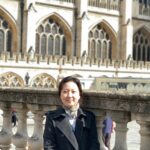 |
Jiyun Kim is a Research Professor in the Center for Buddhist Studies at Geumgang University, and a Lecturer of the Department of Buddhist Studies at Dongguk University in Korea. She is interested in the East Asia Buddhism, especially the Shi-moheyan-lun 釋摩訶衍論 which is the commentary on the Awakening of Mahāyāna Faith. More specifically, her work examined the relationship between the Shi-moheyan-lun and the Silla Buddhism. Therefore, she is trying to find the correlation of the Shi-moheyan-lun and the esoteric Buddhism of Silla, as well as she studies the relation with the thought of Wonhyo 元曉, Fazang 法藏, and the Shi-moheyan-lun. In addition, she focuses on the period of creation, some ideas such as the Avidyā 無明 and the theory of consciousness 識說 of the Shi-moheyan-lun, the manuscripts of this book to reveal the history through China, Korea, and Japan, and so on. |
| KIM Younmi 金延美 (Ewha Womans University 韓國梨花女子大學)  |
Youn-mi Kim is an Assistant Professor in the Department of History of Art at Ewha Womans University. Professor Kim is a specialist in Chinese Buddhist art, but her broader interest in cross-cultural relationships between art and ritual extends to Korean and Japanese materials, as well. She is particularly interested in symbolic rituals, in which an architectural space serves as a non-human agent; the interplay between visibility and invisibility in Buddhist art; and the sacred spaces and religious macrocosms created by religious architecture for imaginary pilgrimages. Based on archaeological data from a medieval Chinese pagoda, her research has also investigated the historical traces of a Buddhist esoteric ritual from Liao China to Heian Japan. She is the editor of New Perspectives on Early Korean Art: From Silla to Koryo? (Cambridge, MA: Korea Institute, Harvard University, 2013), and she is currently working on a book manuscript entitled Art, Space, and Ritual in Medieval Buddhism: From a Liao Pagoda to Heian Japanese Esoteric Ritual. Besides survey courses on Chinese art, she also teaches seminars on Chinese funerary art, religious art, and secular painting. Her teaching interests also include pre-modern Korean art. |
| LI Zijie 李子捷 (SOAS University of London 倫敦大學亞非學院) 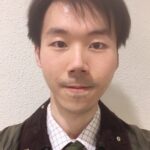 |
Li Zijie, Ph.D. of Komazawa University in Tokyo. He was under the guidance of Professor Ishii Kosei and Professor Matumoto Shiro, Postdoctoral Researcher at the Institute of Humanities, Kyoto University and studied under the guidance of Professor Toru Funayama. He is now a Postdoctoral Fellow at SOAS University of London and is studying under the guidance of Professor Lucia Dolce. His main research area is the history of East Asian Buddhism in the 5th-7th centuries. |
| David QUINTER (University of Alberta 加拿大阿爾伯塔大學) 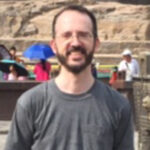 |
David Quinter (Ph.D., Stanford University, 2006) is Associate Professor of East Asian Religions in the Program in Religious Studies and the Department of East Asian Studies at the University of Alberta (Edmonton, Canada). His research interests center on medieval Nara Buddhism, devotional cults, and the interplay of textual, visual, and material culture in East Asian religions. His book From Outcasts to Emperors: Shingon Ritsu and the Mañjuśrī Cult in Medieval Japan was published by Brill in 2015, and he is now working on a monograph on Eison (1201–1290) and his diverse ritual and cultic activities. Recent articles include “Mantras and Materialities: Saidaiji Order Kōmyō Shingon Practices” (Japanese Journal of Religious Studies 45, no. 2, 2018); “Materializing and Performing Prajñā: Jōkei’s Mañjuśrī Faith and the Kasagidera Restoration” (Japanese Journal of Religious Studies 43, no. 1, 2016); and “Localizing Strategies: Eison and the Shōtoku Taishi Cult” (Monumenta Nipponica 69, no. 2, 2014). |
| Saerji 薩爾吉 (Peking University 北京大學) 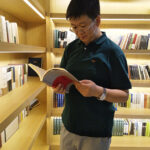 |
SAERJI is Associate Professor in the Department of South Asian Studies at Peking University, in China. He received his Ph.D. in the Department of Philosophy at Peking University. His Ph.D. Dissertation is a Study on the Mahāvaipulya-mahāsamnipāta-sūtra (revised and enlarged version published in 2019). Dr. Saerji has been to Centre for Advanced Study, Oslo, Norway, as a guest student, taking part in an international research team on Buddhist Sanskrit manuscripts for the academic year 2001-2002, he also has been to Buddhist Institute of rDzong gSar Monastery in Sichuan, China (2004), to study Tibetan Buddhism. His research focusses on identifying, reading and editing ancient Buddhist manuscripts in the languages of Buddhism deriving from Sanskrit, Buddhist philosophy, and Indo-Tibetan Buddhism. He has authored or co-authored over forty book chapters and journal articles. |
| Neil SCHMID (Dunhuang Academy 敦煌研究院)  |
Neil Schmid is Research Professor at the Dunhuang Academy in the Centre for Silk Road and Dunhuang Comparative Research. His research centers on Dunhuang and covers variety of topics: the role of Buddhist literature in ritual and art, medieval economic development, esoteric Buddhism, and transcultural flow of religious objects and ideas across northern Asia. Neil is currently working on several book-length projects, among them a monograph entitled From Byzantium to Japan: Ritual Objects and Religious Exchanges Across Eurasia in Late Antiquity, and A Comprehensive Guide to Scholarly Resources for Dunhuang Studies 國際敦煌學學術資源全集 in English and Chinese. |
| SHEN Weirong 沈衛榮 (Tsing-hua University 清華大學)  |
沈衛榮德國波恩大學中亞語言文化學博士,歷任哈佛大學印度梵文研究系合作研究員、德國洪堡大學中亞系代理教授、日本京都大學文學部外國人共同研究員、台灣中央研究院歷史語言研究所客座教授、普林斯頓高等研究院2012/2013年度研究員、德國柏林高等研究院2014/2015年度研究員等職。曾任中國人民大學國學院教授、西域歷史語言研究所所長、漢藏佛學研究中心主任。現任清華大學人文社會科學高等研究所、清華大學中文系教授。 專門研究領域:西域語文、歷史,特別是西藏歷史、藏傳佛教和漢藏佛學的比較研究。 |
| Elizabeth TINSLEY (UC Irvine美國加州大學爾灣分校) 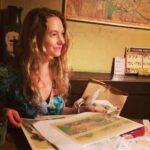 |
Elizabeth Noelle Tinsley is Assistant Professor of East Asian Buddhist Studies in the Department of East Asian Studies at the University of California, Irvine. She holds a Ph.D. from Otani University (Japan) in Buddhist Culture (2011) and from Columbia University in Religion (2019), as well as a B.A. and M.A.in Art History from the University of Cambridge. Prior to joining UC Irvine, she worked at the Medieval Japanese Studies Institute: Center for the Study of Women, Buddhism and Cultural History (Kyoto) and Ritsumeikan University Art Research Center Archive, and interned at Nara National Museum. She specializes in Japanese religious cultures and teaches on a wide range of topics in the history, philosophy, and visual cultures of East Asian Buddhism. Her research interests center on the manipulable sacred relationship between form and content, both material and immaterial, and this informs two current, related projects. The first, on medieval oracular spirit possession in Japanese Buddhism, examines the phenomenon of the channelling of esoteric teachings to scholar monks by gods, where the body itself is the medium, in both senses of the word. The second explores the aesthetics of the restricted/bound and unrestricted/disintegrating body in Japanese pulp visual culture of the 1950s to the present-day as that culture negotiates Buddhist, Christian, Greek, and Roman imagery and ideas. These two projects are represented, respectively, by the papers “Indirect Transmission in Shingon Buddhism: Notes on the Henmyōin Oracle” (The Eastern Buddhist, New Series, Vol. 45, Nos. 1&2, 2014) and “The Composition of Decomposition: Erotic-Grotesque Modernity in Buddhist Kusōzu Paintings by Itō Seiu and Matsui Fuyuko” in Journal of Asian Humanities at Kyushu University (JAH-Q), Vol.2, Spring 2017). Tinsley’s work has been supported by The Metropolitan Museum of Art, The Japan Society for the Promotion of Science, The Donald Keene Center, and The Weatherhead East Asian Institute. |
| Steven TRENSON (Waseda University 日本早稻田大學)  |
Steven Trenson is Associate Professor in the Faculty of International Research and Education at Waseda University. His research focuses on the history of esoteric Buddhism (mikkyō 密教) in medieval Japan. In particular, he examines the historical development of Shingon Buddhist doctrine and practice from the point of view of relic cults and related beliefs, such as the dragon and the wish-fulfilling jewel, and investigates how these cults stimulated the development of some key areas of medieval Japanese religion. Some of the areas studied are the interaction between Buddhism and Shinto and Buddhist discourses on divine kingship. He has published a number of articles on dragon and relic-jewel cults, including a book entitled Kiu, hōju, ryū: Chūsei Shingon mikkyō no shinsō 祈雨・宝珠・龍―中世真言密教の深層 (Kyoto Daigaku Gakujutsu Shuppankai, 2016), and is currently working on a study of the ‘Buddha-Mother’ (butsumo 仏母) in medieval Shingon Buddhism. |
| Nicholas Morrow WILLIAMS (University of Hong Kong 香港大學) 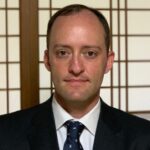 |
Nicholas Morrow Williams is associate professor of Chinese literature in the School of Chinese of the University of Hong Kong and editor of Tang Studies. For the past several years he has been occupied with a new translation of the Chuci (Elegies of Chu) anthology, forthcoming from Oxford World Classics. His research increasingly concerns the role of Buddhism in the development of Chinese literature and culture. Two fundamental blindspots of Asian studies are parochial nationalism and reductive materialism, and Buddhism is a valuable corrective on both fronts. During the 2019–2020 academic year he is based at Kyoto University, researching the intersection of Buddhist thought and Chinese literary forms in Kūkai’s writings with the support of the Hakuho Japanese Research Fellowship. |
| Pamela D. WINFIELD (Elon University 美國伊隆大學)  |
Pamela D. Winfield is Associate Professor of Religious Studies at Elon University, NC. Her first book, Icons and Iconoclasm in Japanese Buddhism: Kūkai and Dōgen on the Art of Enlightenment (Oxford University Press, 2013) won the Association of Asian Studies Southeastern Conference Book Prize in 2015. Her second book is a co-edited volume with Steven Heine on Zen and Material Culture (Oxford University Press, 2017). Her research has been supported by grants notably from the American Academy of Religion, the Association of Asian Studies, and the Asian Cultural Council, and her scholarship has appeared in publications by Oxford, Columbia University Press, Brill, Routledge, Springer, The Japanese Journal of Religious Studies, Material Religion, and Religion Compass, among others. She is currently the President of the Society for the Study of Japanese Religions and Co-chair of the Arts, Literature and Religion Unit at the American Academy of Religion. |
| XIE Jisheng 謝繼勝 (University of Zhejinag 浙江大學) 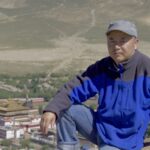 |
Dr. Xie Jisheng is currently a professor and director of Zhejiang University Center for Buddhist Art. In 2000 he received his doctoral degree from the Central Academy of Fine Arts in Beijing. From 1987 to 2005 Xie worked in Chinese Academy of Social Sciences as a researcher and then as a professor he taught the lesson of art history in Capital Normal University. In 2014 he moved to ZJU and is teaching and making research in the center. Within recent years he has been working on studying of Tibetan art, especially on investigating on Sino-Tibetan art relic sites. His publications include Xixia Thangka Paintings with a Tibetan Style (2001), A Development History of Tibetan Buddhist Art (2010 one of contributors), Collective Researches on Feilaifeng Cliff Sculptures (2014 one of contributors) and A Monumental Survivals of Tibetan Buddhism in the Beijing from Yuan to Qing Dynasty (2018 one of contributors). |
| ZHANG Shubin 張書彬 (China Academy of Art 中國美術學院) 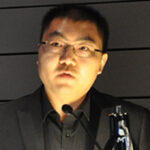 |
Shubin Zhang, Ph.D., is Assistant Professor of Buddhist art history and archaeology at China Academy of Art, in Hangzhou. He received his Ph.D. in the Department of Art History from China Academy of Art (2017), with a dissertation titled “Dharma and Orthodoxy: The Formation of a Buddhist Sanctuary in Mt. Wutai and Its Visual Imagery in the East Asian Faith System” (《正法與正統——五臺山佛教聖地的建構及在東亞的視覺呈現》), under the supervision of Prof. Zaixin Hong. He also was the post-doctoral fellow in the Center for Buddhist Art in China at Zhejiang University (2017–2019), with the research of “The Religion of Images, Refined and Rigorous:A New Study on the Related Issues of Manjusri Belief in East Asia in the Middle Ages”(《像教精嚴——中古時期東亞文殊信仰相關問題新考》), under the supervision of Prof. Jisheng Xie. He is engaged in research projects related to Buddhist art study, Visual Culture and Art Communication Studies, especially the relationship between religion and civilizational process, Buddhism and politics, the formation of a Buddhist sanctuary at Mt. Wutai and its visual imagery in the East Asian faith system. He now takes charge of “The Study on Mt. Wutai Buddhist Faith from the perspective of Material Culture exchange in East Asia” (2019–2022) by China National Social Science Fund. |
| ZHAO Xiaoxing 趙曉星 (Dunhuang Academy 敦煌研究院) 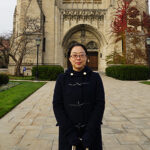 |
趙曉星,女,1980年出生,吉林省梅河口市人,2007年畢業於蘭州大學敦煌學研究所。 2007年進入敦煌研究院工作,現任敦煌文獻研究所副所長、研究館員,主要從事敦煌文獻與敦煌石窟研究。發表論文50餘篇,出版著作《莫高窟之外的敦煌石窟》《梵室殊嚴——敦煌莫高窟第361窟研究》《吐蕃統治時期敦煌密教研究》《沙漠中的美術館——敦煌莫高窟》等。主持完成國家社科基金西部項目“吐蕃統治敦煌時期的密教研究”等多項課題,現正主持教育部基地重大項目《敦煌西夏時期洞窟的分期與研究》。 Zhao Xiaoxing, was born in Meihekou city in Jilin Province on November 3rd 1980. She got her Ph.D. in History, graduated from Lanzhou University in 2007, and began to work in Dunhuang Academy. Now she is a professor and the deputy director of the Textual Research Institute of Dunhuang Academy. Mainly is engaged in the Dunhuang manuscripts and the Dunhuang Grottoes’ studies. She had published more than 50 articles, and 5 books: The Caves in Dunhuang Except Mogao Grottoes(2018), A Case Study of Cave 361 at the Mogao Grottoes in Dunghuang (2017), The Tantric Buddism in Dunhuang in Middle Tang Dynasty(2017), The Art Museum in the Desert(2015). She presided over the completion of several research projects, including The Tantric Buddism in Dunhuang in Middle Tang Dynasty by China National Social Science Fund, now takes charge of the Staging and Study of the Xixia Grottoes in Dunhuang by the Major research base projects of Chinese Ministry of Education. |
